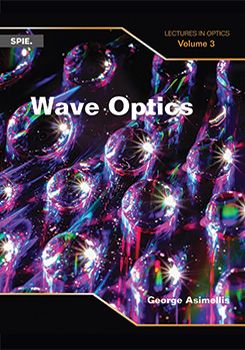|
Geometrical optics deals with light propagation in optical media. Reflection and refraction describe effects resulting from a change in the light propagation speed. This change may occur instantly on an interface, as well as gradually within an inhomogeneous medium in which light is subject to an incremental change in speed (such as within the atmosphere). In effect, geometrical optics ignores certain aspects of the wave nature of light, considering how small the wavelength is: When a propagating beam of light encounters an aperture or obstacle with no other change in the optical medium, it simply continues on its rectilinear propagation through or around this, casting a geometrical shadow of the aperture. The only condition is that the obstacle or aperture is much larger than the wavelength. Diffraction is noted when the obstacle or aperture is comparable in size to the wavelength, so the interaction of the light wave with the aperture plays an important role. On an observation screen, it is no longer the geometrical shadow that is formed, but the diffraction distribution of luminous intensity resulting from the interaction between the aperture / obstacle and the wave. |
|
|


